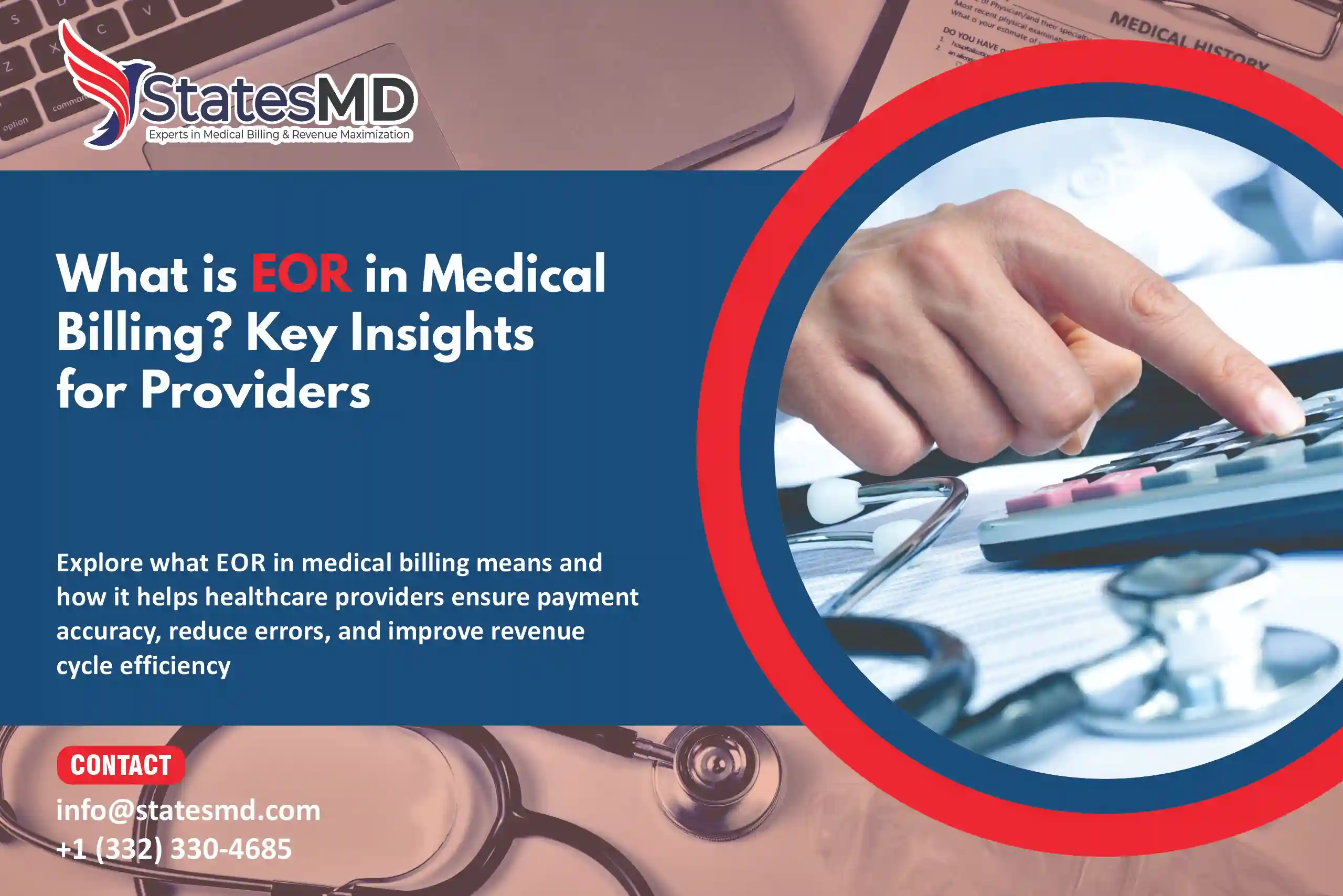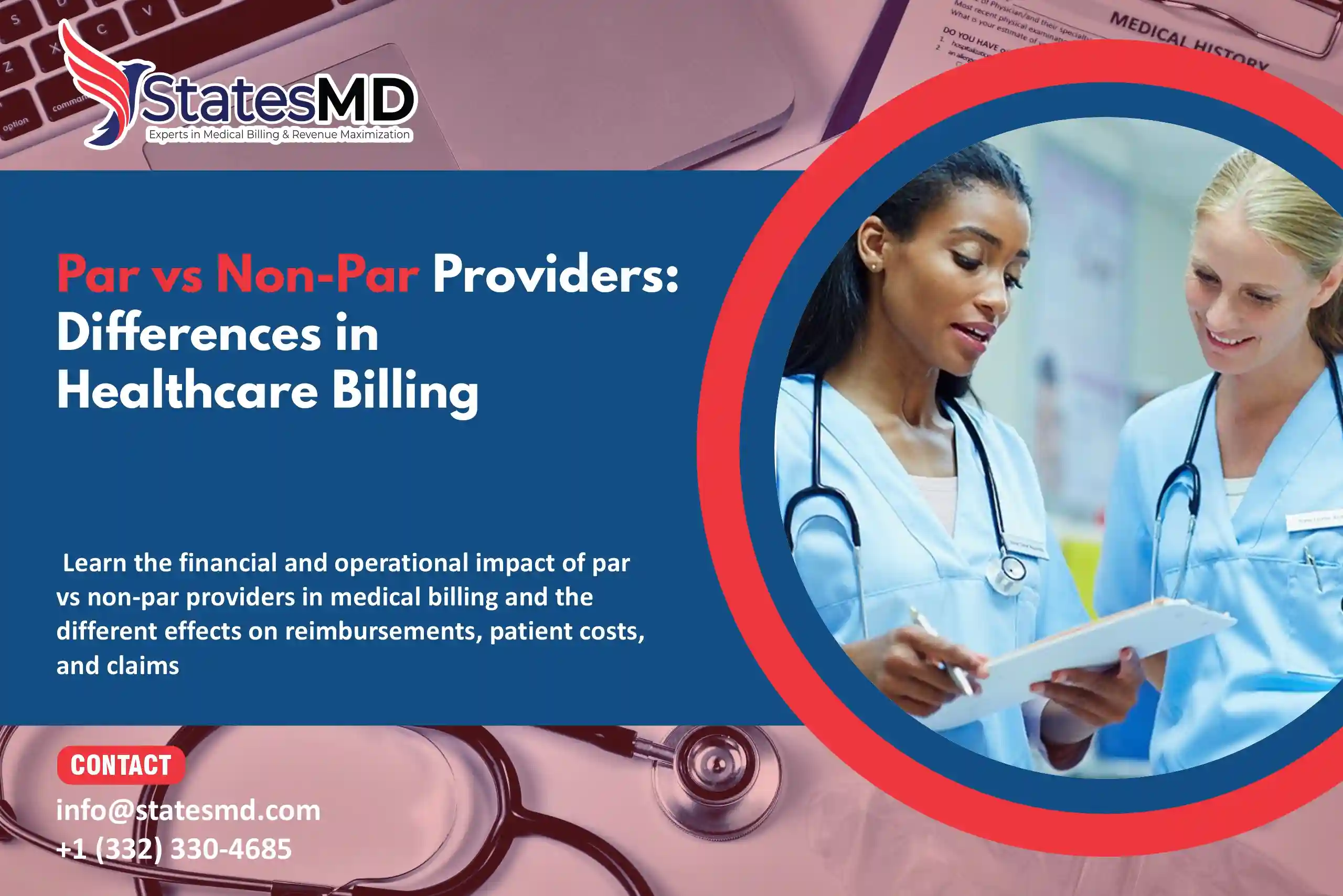The line between acceptable and unacceptable providers can be perplexing for healthcare workers, particularly when it comes to invoicing and insurance claims. Do you understand how these disparities affect your practice’s financial health? The American Medical Association (AMA) reports that more than 40% of physicians are unaware of the economic implications of participation in insurance networks. Understanding the distinction is crucial for maximizing reimbursement while avoiding patient misunderstanding, whether you’re a physician, medical biller, or revenue cycle management specialist.
In this post, we’ll discuss the underlying differences between average and bad providers, and how these decisions impact medical billing and payments. According to the Centers for Medicare & Medicaid Services (CMS) and the American Hospital Association (AHA), clinicians who join insurance networks commonly receive up to 40% higher payment rates. Still, non-participants receive rates as low as 50%.
How Do You Define a Par Provider?
A par provider (participating provider) is a medical professional or facility that signed a contract with an insurance company and agreed to accept the insurance company’s payment terms for services provided. These providers adhere to the payment schedules and other guidelines established by the insurance plan, resulting in a more efficient billing and reimbursement procedure. In return, par providers usually earn greater reimbursement rates from insurers than non-par providers.
Role of Par Providers in Medical Billing
Par providers play an important part in the medical billing process. Accepting the insurer’s payment rates simplifies the billing procedure for patients and healthcare providers. Here’s how they assist with the medical billing procedure:
- Accepting Insurance Rates: Par providers agree to accept the insurance company’s rates as full payment for services, which usually results in faster reimbursement.
- Simplified Claims Process: The provider submits claims directly to the insurance carrier, resulting in speedier processing and less administrative complexity.
- Minimized Patient Costs: Patients benefit from reduced individual costs since providers cannot charge more than the insurance company’s negotiated rate.
The advantages of par providers
There are some substantial advantages to being a par provider, notably in terms of invoicing and reimbursements:
- Easy Reimbursement Rates: Insurance companies frequently offer higher payment rates to par providers who make a network membership.
- Quick Payment Processing: Claims from par providers are frequently processed more quickly, resulting in speedier payment and a shorter time between delivery and reimbursement.
- Low Patient Expenses: Because par providers agree to the insurance company’s terms, patients frequently have lower out-of-pocket payments, which can boost patient satisfaction and loyalty.
- Increased Patient Volume: Because people choose in-network doctors, being a part of an insurance network frequently results in a bigger patient pool.
Par vs. Non-Par Providers in Health Insurance
The differential between par and non-par providers has a greater impact on payment rates, claims processing, and patient costs. Understanding these distinctions is critical for healthcare providers seeking to enhance financial and operational outcomes.
Reimbursement for Par Providers
Par providers typically have agreements with insurance carriers outlining fixed payment rates for services delivered. These rates are usually higher than those charged to subpar suppliers, resulting in faster reimbursements and more consistent cash streams.
Key points for par provider reimbursement are:
- Set Rates: The insurance company sets the rates, which par providers accept as full payment for their services.
- Insurance claims are processed quickly when the provider is in-network.
- Lower Patient Out-of-Pocket Costs: Patients have fewer expenses because their insurance company pays a larger share of the bill.
- No Balance Billing: Providers are prevented from charging patients more than the agreed-upon fees, ensuring the patients do not get unexpected bills.
Understanding Reimbursement for Non-Par Providers
Non-par providers are not part of an insurance network and therefore do not have pre-negotiated rates with insurers.
Key points for non-par provider reimbursement include:
Lower Payment Rates: Insurers may pay less than a comparable provider, leaving the patient to pay the difference.
Longer Claims Processing Times: Claims from poor providers may take longer to process because there is no formal agreement with the insurer.
Balance Billing Allowed: Non-par providers may bill patients for the difference between the insurer’s payment and the provider’s rate.
Higher Patient Costs: Patients often face higher out-of-pocket expenses when seeing non-par providers because of the lower reimbursement and balance billing.
Key Differences Between Par and Non-Par Providers
Understanding the key distinctions between acceptable and poor providers is critical for making informed healthcare choices. This comparison influences financial outcomes, administrative tasks, and patient satisfaction.
Financial Impact on Providers and Patients
Par providers benefit from better reimbursement rates and more consistent reimbursements, which reduce patient costs. Non-par providers receive reduced reimbursements and may charge additional fees to patients, increasing their financial burden.
- Par Providers: These providers agree on insurance payment rates, which leads to predictable payouts and lower out-of-pocket expenses for patients. According to CMS data, participating providers frequently get 20% to 40% more in reimbursement than non-participants.
- Non-Par Providers: They may charge more than the insurer authorizes, potentially increasing patient responsibility. Non-par providers may experience delays or receive lesser reimbursements, which might be as low as 50-60% of standard rates.
Administrative and Legal Considerations
Par providers must follow insurance contracts and billing laws to ensure compliance. Non-par providers are responsible for more administrative tasks and could face differences over balance billing and payment collection.
- Par Providers: Must follow insurance contract terms, including fee schedules and claim submission deadlines. This allows more efficient claim processing but may limit the provider’s price options.
- Non-Par Providers: These have broader fee-setting flexibility while facing additional administrative challenges such as direct billing and delinquent account tracking. They may also face legal issues if billing methods are not transparent.
What Does “Non-par” Mean in Medical Billing?
Non-compliant providers are not contracted with insurance carriers, giving them greater flexibility in determining service fees and requesting new billing concerns. Their position has a large impact on reimbursement procedures and patient financial obligations.
The effect of non-par status on medical billing
Non-compliant medical billing commonly leads to greater patient personal expenses and additional administrative challenges for physicians processing out-of-network claims.
- Patient Financial Responsibility: Subpar providers frequently request customers to pay upfront or cover the amount not covered by insurance, resulting in increased out-of-pocket payments.
- Administrative Challenges: Out-of-network claims processing, delayed reimbursements, and communicating coverage limitations to patients can complicate the billing process.
What Does “Par” Mean in Medical Billing?
Participating (Par) providers have agreed with insurance companies to accept negotiated service rates. This arrangement provides benefits such as faster payments and decreased patient costs but it also imposes specific requirements on providers.
Impact of Par Status on Medical Billing
Par status in medical billing simplifies payments and reduces patient bills by matching with authorized insurance rates, resulting in simpler financial processes for providers.
- Lower Patient Costs: Par providers accept insurance-negotiated rates, which reduces patients’ out-of-pocket payments and improves access to treatment.
- Efficient Reimbursements: These providers mostly get quick payment processing from insurers, simplifying revenue cycle management.
Conclusion
Understanding the difference between par and non-par providers is essential for medical professionals looking to improve billing efficiency and decrease patient fees. While par providers benefit from simpler reimbursements and lower patient financial pressures, non-par providers incur additional administrative challenges and payment delays. Both methods significantly affect revenue cycles and patient satisfaction. By carefully assessing these differences, providers can make educated decisions that align their practices with financial and operational objectives. Adopting measures based on this information can improve results for both clinicians and patients.
FAQs
1. What is the difference between par and non-par providers?
Par providers have agreements with insurance companies to accept negotiated rates, while non-par providers do not. Non-par providers may charge patients more and face lower reimbursement.
2. How does being a par provider impact reimbursement rates?
Yes, non-par providers can charge patients for the difference between the insurer’s reimbursement and their rate, frequently resulting in increased out-of-pocket expenses.
3. Can non-par providers charge patients more?
Yes, non-par providers can charge patients for the difference between the insurer’s reimbursement and their rate, which frequently results in increased out-of-pocket expenses for patients.
4. How do par providers benefit patients?
Par providers reduce patient costs by accepting insurance rates as full payment, resulting in lower out-of-pocket expenses and faster claims processing.
5. What are the administrative challenges for non-par providers?
Non-par providers face longer claims processing times, administrative complexity, and potential legal issues related to balance billing and payment collection.




